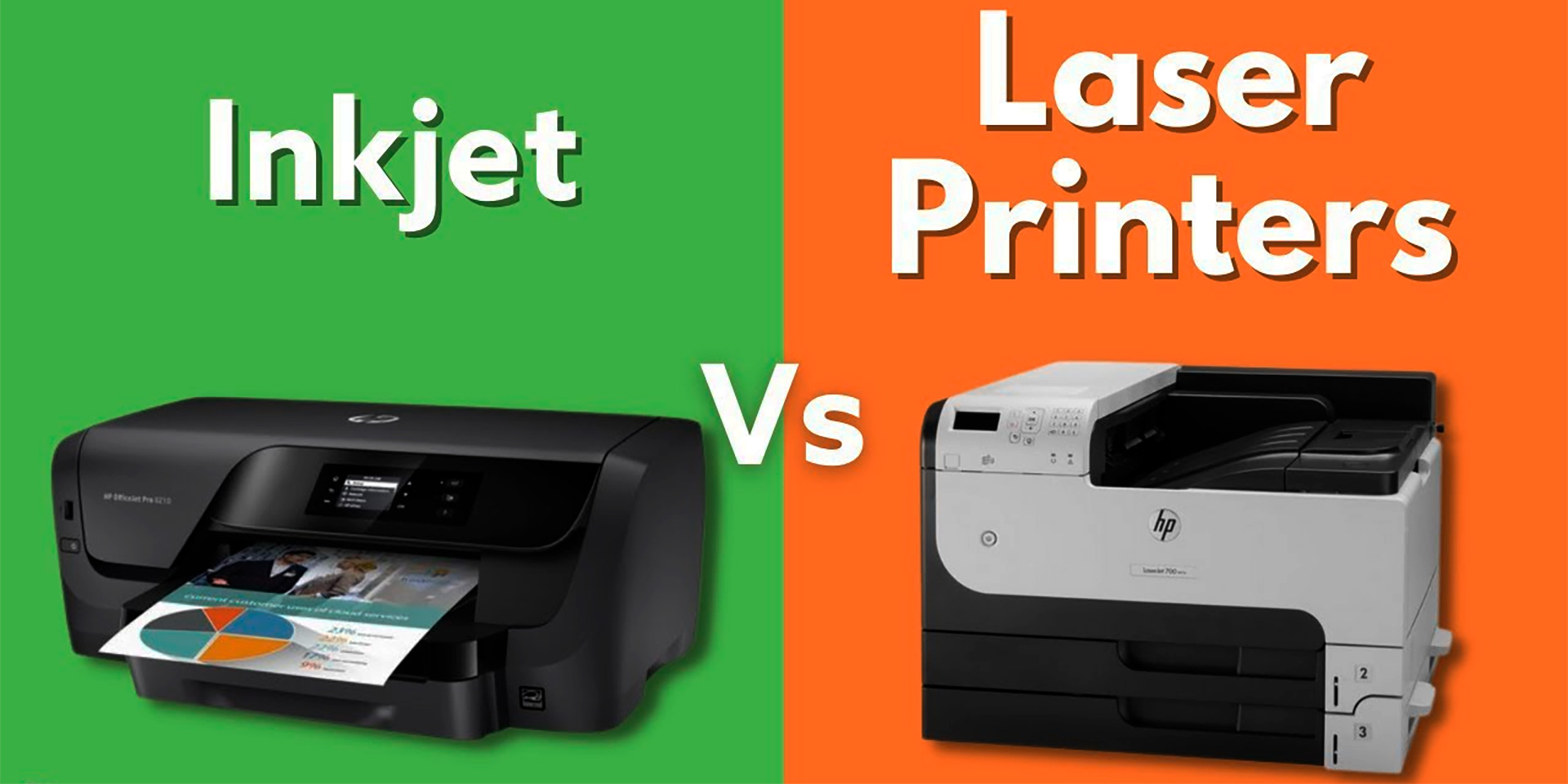
From Inkjet to Laser: Understanding Different Types of Printers
Printers have become indispensable in both home and office settings, handling tasks ranging from school assignments to professional documents. The multitude of printer options can be daunting, making it essential to comprehend the different types of printers and their specific applications. In this article, we will explore the two primary types of printers: inkjet and laser, examining their benefits, drawbacks, and ideal use cases…
Inkjet Printers: The Versatile Workhorse
Inkjet printers are ubiquitous in many households and small offices. They function by propelling droplets of liquid ink onto paper to form images or text. Here’s a detailed look at what makes inkjet printers so favored.

Advantages of Inkjet Printers
Cost-Effective Initial Purchase: Inkjet printers typically have a lower upfront cost compared to laser printers, making them an attractive option for budget-conscious consumers.
High-Quality Color Printing: Inkjet printers excel at producing high-quality color prints. They accommodate various paper types and sizes, perfect for printing photos and graphics.
Compact Size: These printers are generally smaller and lighter than their laser counterparts, making them suitable for homes and small offices with limited space.
Ease of Use: Inkjet printers are user-friendly and easy to set up, with most featuring straightforward software and wireless connectivity options that simplify the printing process.
Disadvantages of Inkjet Printers
Cost of Ink: While the initial cost of an inkjet printer is low, the expense of ink cartridges can accumulate over time, making high-volume printing costly.
Slower Printing Speed: Inkjet printers are generally slower than laser printers, particularly for large print jobs.
Ink Smudging and Fading: Inkjet prints are more prone to smudging and fading over time, especially when exposed to moisture or sunlight.
Ideal Use Cases for Inkjet Printers
Inkjet printers are best suited for users who require high-quality color prints but do not need to print in large volumes. They are ideal for:
- Home users who print photos, school projects, and occasional documents.
- Small businesses that need to produce marketing materials like flyers and brochures.
- Artists and photographers who demand detailed and vibrant color prints.

Laser Printers: The Speedy Powerhouse
Laser printers, in contrast, use a different technology involving laser beams and toner powder to create text and images. This method offers several distinct advantages, especially for high-volume and monochrome printing.
Advantages of Laser Printers
Speed and Efficiency: Laser printers are significantly faster than inkjet printers, capable of handling large print jobs quickly, making them ideal for busy office environments.
Lower Cost Per Page: Although the initial cost of a laser printer is higher, the cost per page is generally lower. Toner cartridges last longer than ink cartridges, reducing overall printing costs.
Sharp Text Quality: Laser printers produce exceptionally sharp and clear text, perfect for professional documents and reports.
Durability of Prints: Prints from laser printers are resistant to smudging and fading, offering more durability and better resistance to environmental factors than inkjet prints.
Disadvantages of Laser Printers
Higher Initial Cost: The upfront cost of purchasing a laser printer is higher compared to inkjet printers, which can be a barrier for individuals or small businesses on a tight budget.
Bulky Size: Laser printers are generally larger and heavier, requiring more space, which can be an issue in smaller offices or home environments with limited room.
Limited Color Printing: While color laser printers are available, they are typically more expensive and do not match the color quality of inkjet printers for photo printing.
Ideal Use Cases for Laser Printers
Laser printers are best suited for environments where speed, efficiency, and cost-effectiveness are paramount. They are ideal for:
- Large offices with high-volume printing needs.
- Businesses that produce a large number of professional documents.
- Schools and educational institutions where quick and efficient printing is required.
Making the Right Choice
When deciding between an inkjet and a laser printer, consider the following factors:
Print Volume: If you print a lot of documents regularly, a laser printer is likely the better choice due to its speed and lower cost per page. For occasional printing, especially if you need high-quality color prints, an inkjet printer might be more suitable.
Print Quality: For documents requiring sharp, clear text, such as contracts and professional reports, laser printers are ideal. For high-quality photo prints and graphics, inkjet printers are superior.
Budget: If your budget is limited, an inkjet printer might be more appealing due to its lower initial cost. However, if you can afford a higher upfront investment, a laser printer could save you money in the long run with its lower operating costs.
Space: Consider the amount of space available for a printer. Inkjet printers are more compact and can fit in smaller spaces, whereas laser printers require more room.
Special Features: Both inkjet and laser printers come with various features such as wireless connectivity, duplex printing, and scanning capabilities. Evaluate which features are essential for your needs and choose a printer that offers them.
Conclusion
Understanding the differences between inkjet and laser printers is key to making an informed decision that suits your printing needs. Inkjet printers offer high-quality color printing and are cost-effective upfront, making them ideal for home use and small businesses. Laser printers, with their speed, efficiency, and lower cost per page, are perfect for high-volume printing environments.
By considering your specific requirements, print volume, quality needs, budget, and available space, you can choose the right printer that will serve you well for years to come. Whether you opt for an inkjet or laser printer, both types have their unique strengths, ensuring that there is a perfect printer out there for everyone.
